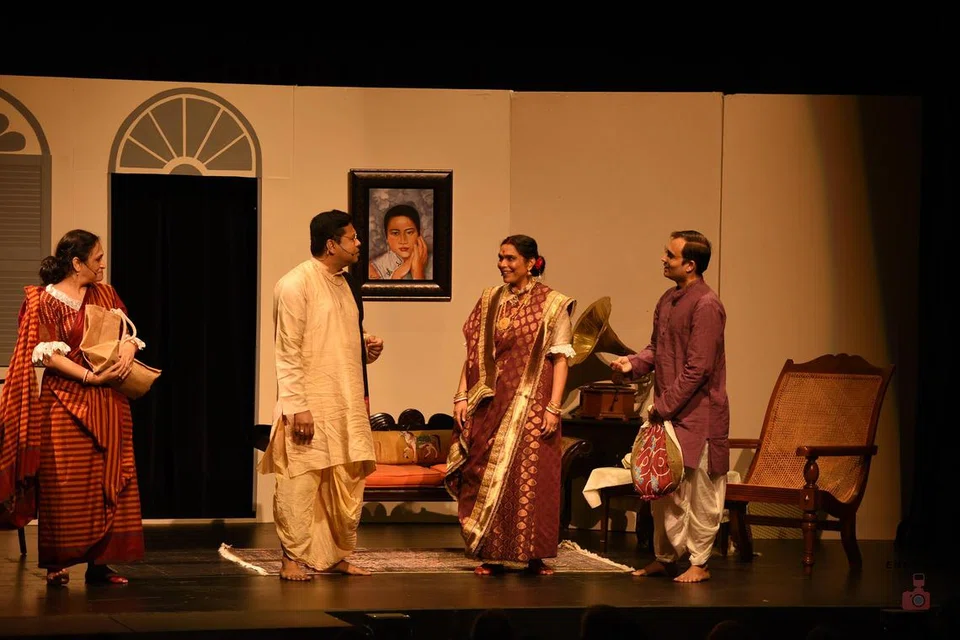The soft murmur of conversation and the rustle of silk sarees greet me as I step into the Singapore Repertory Theatre’s lobby.
I was there to witness Charulata, a one-night only play, an adaptation of Rabindranath Tagore’s novella Nastanirh, a timeless tale of longing, brought to life on stage by Jalsa and the Tagore Society.
Charulata is a compelling story set in 19th-century Bengal, focusing on Charulata, a young woman trapped in an emotionally stifling marriage.
While her husband, Bhupati, is preoccupied with his work, Charulata finds herself drawn to his cousin, Amal, who brings a fresh perspective into her life.
The set design captured the essence of old Kolkata, transporting the audience back to the early 1900s.
The stage, which director and scriptwriter Gauri Gupta adorned herself, had period-specific details, such as wooden furniture with delicate carvings, a Persian rug and large, open windows that evoked the sprawling mansions of colonial-era Bengal.
Every element on stage felt like a window into the past, barring one – off to the right was a huge painting of Singapore’s skyline.
The play’s first scene was set in Singapore at the peak of the pandemic, when the circuit breaker was first implemented.
“We wanted to explore not only what Charulata felt, but why her story still echoes today. Setting the adaptation within the frame of a present-day writer during the isolating period of the pandemic allowed us to draw parallels between past and present – between physical confinement and emotional introspection. It was less about updating Tagore and more about holding a mirror up to our own time,” Ms Gauri said.
Rehearsals for the play spanned over three months, allowing the actors to not only understand their characters deeply but also to navigate the subtle transitions between the period setting and the contemporary frame.
In Singapore, a multilingual society, plays like Charulata is a boon for diaspora audiences.
At the heart of this production is a quiet insistence that there is space – urgent, necessary space – for South Asian narratives told in the languages of their origins.
“There’s a deep, often underserved audience for stories like these,” said Ms Gauri, whose vision guided the adaptation.
“Productions like Charulata remind us of the power of hearing stories in the languages they were originally conceived in.”
Set across two timelines, colonial Bengal and a contemporary Singaporean metropolis, the play drew poignant parallels between the two. Both women grappled with a hunger for connection, creative expression and the need to be truly seen in a world that constantly diminishes them.
What truly elevated the production was its use of music. Carefully curated strains of Rabindra Sangeet – Tagore’s signature compositions – floated through the performance, sometimes in haunting instrumental form, other times translated into Hindi.
Of course, adapting Tagore is no small feat. “His prose is layered and poetic,” the director said.
“The biggest challenge was honouring the original while making it accessible and meaningful to a contemporary audience.”
As the final notes of Rabindra Sangeet faded into silence and the lights dimmed on Charulata’s world, the audience broke into roaring applause.
As Ms Gauri reflected on the reception to the play, she said” “One audience member shared that they saw their own mother in Charulata while another said the modern-day writer’s arc reflected their personal experience during lockdown. These responses affirmed that the play was not just watched, but truly felt.”


